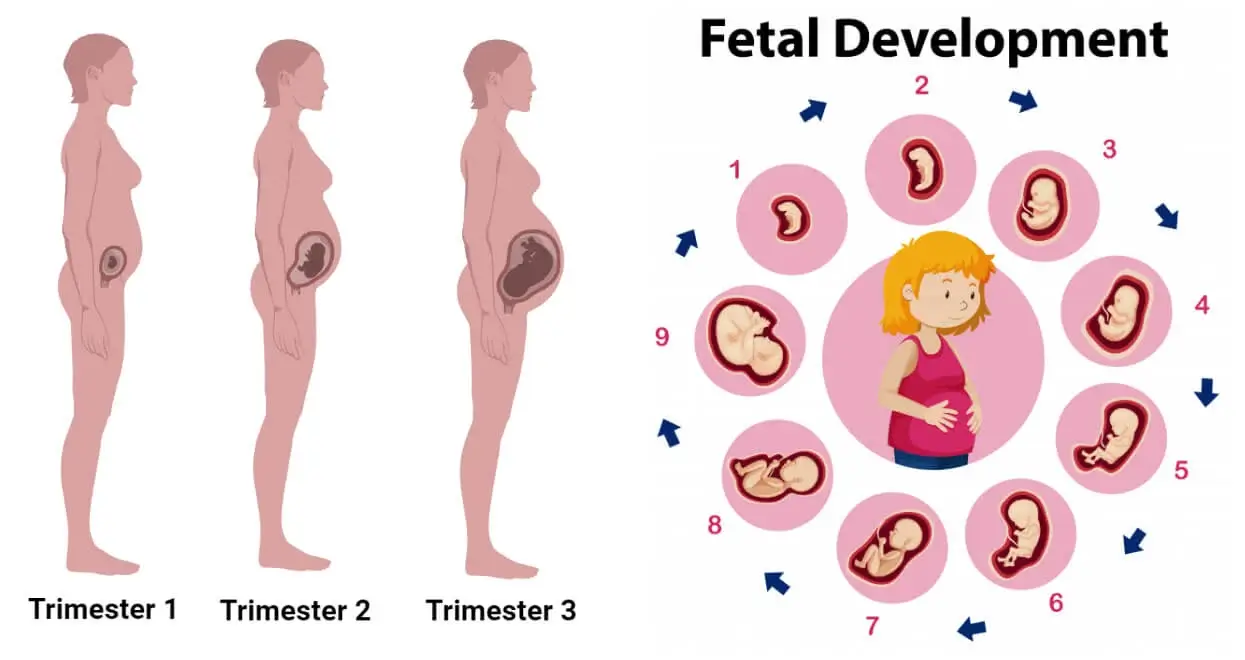
Pregnancy Week by Week: A Comprehensive Guide
Pregnancy is an extraordinary journey that spans 40 weeks, each marked by significant developments in the growth and well-being of both the mother and the developing fetus. This comprehensive guide provides a week-by-week breakdown of the key milestones and changes that occur throughout this remarkable period.
Week 1-2: Conception and Implantation
- Conception: The journey begins with the fertilization of an egg by a sperm, typically occurring in the fallopian tube.
- Implantation: The fertilized egg, now known as a blastocyst, travels through the fallopian tube and implants into the lining of the uterus.
Week 3-4: Embryonic Development
- Embryonic disc formation: The blastocyst develops into an embryonic disc, which will eventually form the embryo and the placenta.
- Neural tube formation: The neural tube, which will develop into the brain and spinal cord, begins to form.
Week 5-6: Fetal Development
- Embryo to fetus: The developing organism is now considered a fetus.
- Heart development: The fetal heart begins to beat.
- Limb formation: The fetus develops tiny buds that will eventually become arms and legs.
Week 7-8: Organ Development
- Major organ formation: The fetus’s major organs, including the brain, heart, lungs, and kidneys, begin to develop.
- Facial features: The fetus’s facial features, such as the eyes, nose, and mouth, start to take shape.
Week 9-10: Rapid Growth
- Fetal growth spurt: The fetus experiences a rapid growth spurt, increasing in size and weight.
- Movement: The fetus begins to make small movements, which may be felt by the mother as early as week 10.
Week 11-12: Gender Determination
- Gender determination: The fetus’s external genitalia begin to develop, allowing for gender determination through ultrasound.
- Fetal heartbeat: The fetal heartbeat can now be detected using a Doppler device.
Week 13-14: Physical Development
- Fingernails and toenails: The fetus’s fingernails and toenails begin to grow.
- Hair growth: Fine hair, known as lanugo, begins to cover the fetus’s body.
Week 15-16: Fetal Activity
- Increased fetal movement: The fetus becomes more active, and its movements may be felt more frequently by the mother.
- Eye opening: The fetus’s eyes begin to open and close.
Week 17-18: Sensory Development
- Hearing development: The fetus begins to develop hearing and may respond to sounds.
- Taste and smell: The fetus’s taste buds and olfactory receptors begin to develop.
Week 19-20: Fetal Growth
- Weight gain: The fetus gains significant weight during this period.
- Skin development: The fetus’s skin becomes thicker and develops a protective layer called vernix caseosa.
Week 21-22: Respiratory System
- Lung development: The fetus’s lungs continue to develop and begin to produce surfactant, a substance that helps the lungs expand.
- Breathing movements: The fetus practices breathing movements, preparing for life outside the womb.
Week 23-24: Fetal Position
- Head-down position: The fetus typically assumes a head-down position in preparation for birth.
- Weight gain: The fetus continues to gain weight and develop fat stores.
Week 25-26: Fetal Heartbeat
- Fetal heartbeat audibility: The fetal heartbeat can now be heard using a stethoscope.
- Eyelid opening: The fetus’s eyelids open and close more frequently.
Week 27-28: Brain Development
- Brain growth: The fetus’s brain undergoes significant growth and development.
- Eye movement: The fetus’s eyes can now move independently.
Week 29-30: Fetal Size
- Fetal size: The fetus is approximately the size of a small cantaloupe.
- Lung maturity: The fetus’s lungs continue to mature and prepare for breathing after birth.
Week 31-32: Fetal Movement
- Increased fetal activity: The fetus becomes more active and may move vigorously.
- Hiccups: The fetus may experience hiccups, which can be felt by the mother.
Week 33-34: Fetal Position
- Head engagement: The fetus’s head may engage in the mother’s pelvis, preparing for birth.
- Weight gain: The fetus continues to gain weight and develop subcutaneous fat.
Week 35-36: Fetal Maturity
- Fetal maturity: The fetus is considered mature enough to survive outside the womb.
- Lung development: The fetus’s lungs are fully mature and ready for breathing.
Week 37-38: Fetal Positioning
- Optimal fetal position: The fetus is typically in an optimal position for birth, head-down and facing the mother’s back.
- Weight gain: The fetus continues to gain weight, but at a slower rate.
Week 39-40: Term Pregnancy
- Term pregnancy: The fetus is considered full-term and ready to be born.
- Labor preparation: The mother’s body prepares for labor, with increased cervical dilation and softening.
Beyond Week 40: Post-Term Pregnancy
- Post-term pregnancy: If the fetus is not born by week 42, it is considered post-term.
- Monitoring: The mother and fetus will be closely monitored to ensure their well-being.
Throughout pregnancy, regular prenatal checkups are essential to monitor the mother’s and fetus’s health, assess fetal growth and development, and provide guidance on nutrition, exercise, and other aspects of prenatal care.